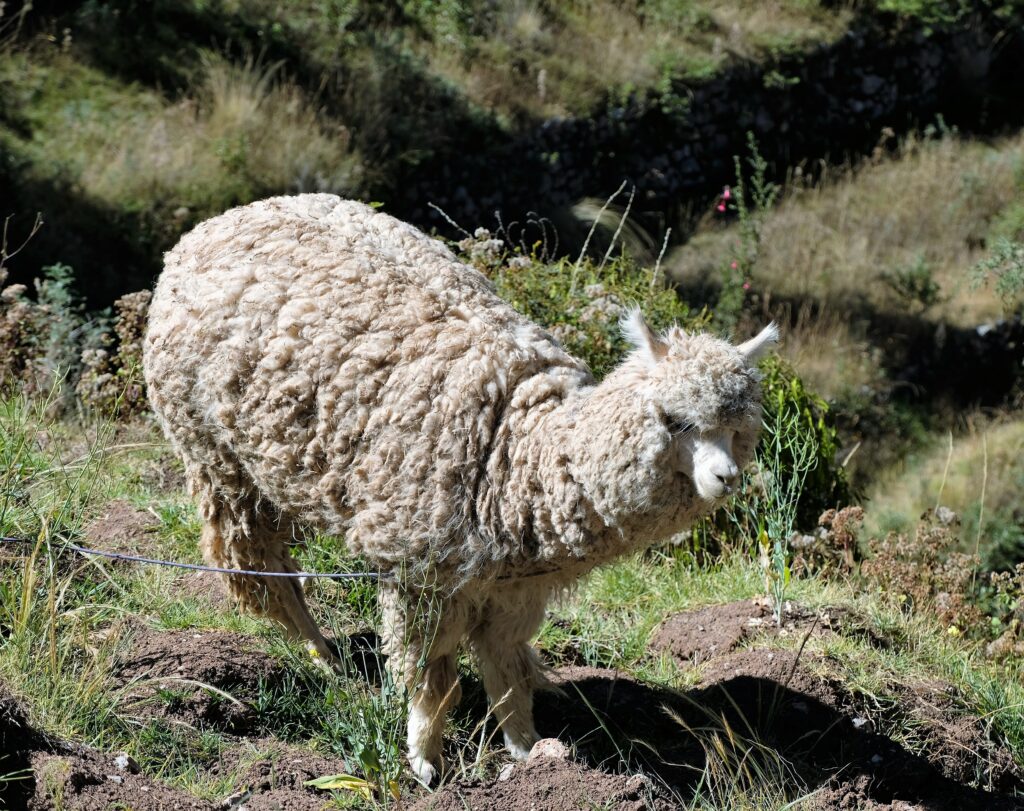Sacsayhuamán / Saqsaywaman the capital of the Inca Empire and part of Cusco’s historical centre were on the cards for the day. I wasn’t planning on doing much, still feeling the repercussions of my first two days…delusional state of vagueness (Cusco Part 1). If I could redo my first three days in Cusco I would, maybe not for the reasons you may think. Day one and two were terrible, and that’s not me making a mountain out of a molehill…altitude sickness; nausea, migraine and a dodgy stomach. Especially during the second day, I had no idea where I was let alone the time. Having had a few titanic migraines in my time, I’d easily put this in the top 5! Life is about experiences, even those that at the time are terrible and you’d wish had never happened are still worth experiencing. Retrospectively it was interesting to experience and altered my perception and approach to hiking for the remainder of my time in Peru and Bolivia (spending the best part 2 months hiking and touring at altitude).
My only comparison would be a mixture of a bad hangover the day after a very bad migraine. No need to cry over spilt milk or bring out the violin. I’ve digressed! I would most like to have redone was my third day. Instead of only exploring the main part of Cusco and taking an additional day to regain my strength (and mind) and recoup, I went and visited Sacsayhuamán; located at the top of one of the hills that surrounds Cusco. Sacsayhuamán is an awesome archaeological site. My regret is I wasn’t in the best frame of mind that day, meaning I was going through the motions more than taking in the splendour of the site. I think my photos reflect my state.
I ambled through Cusco Town Square like a shadow, taking very little in of my surroundings. Even getting to the town square seemed like a lot of effort. Reluctantly I got a coffee at Starbucks (don’t like their coffee) hoping the caffeine would give me a little boost. For now I won’t go into any detail about the town square, I spent so much time there during my time in Cusco so will try do it justice throughout my posts about the city and surroundings.
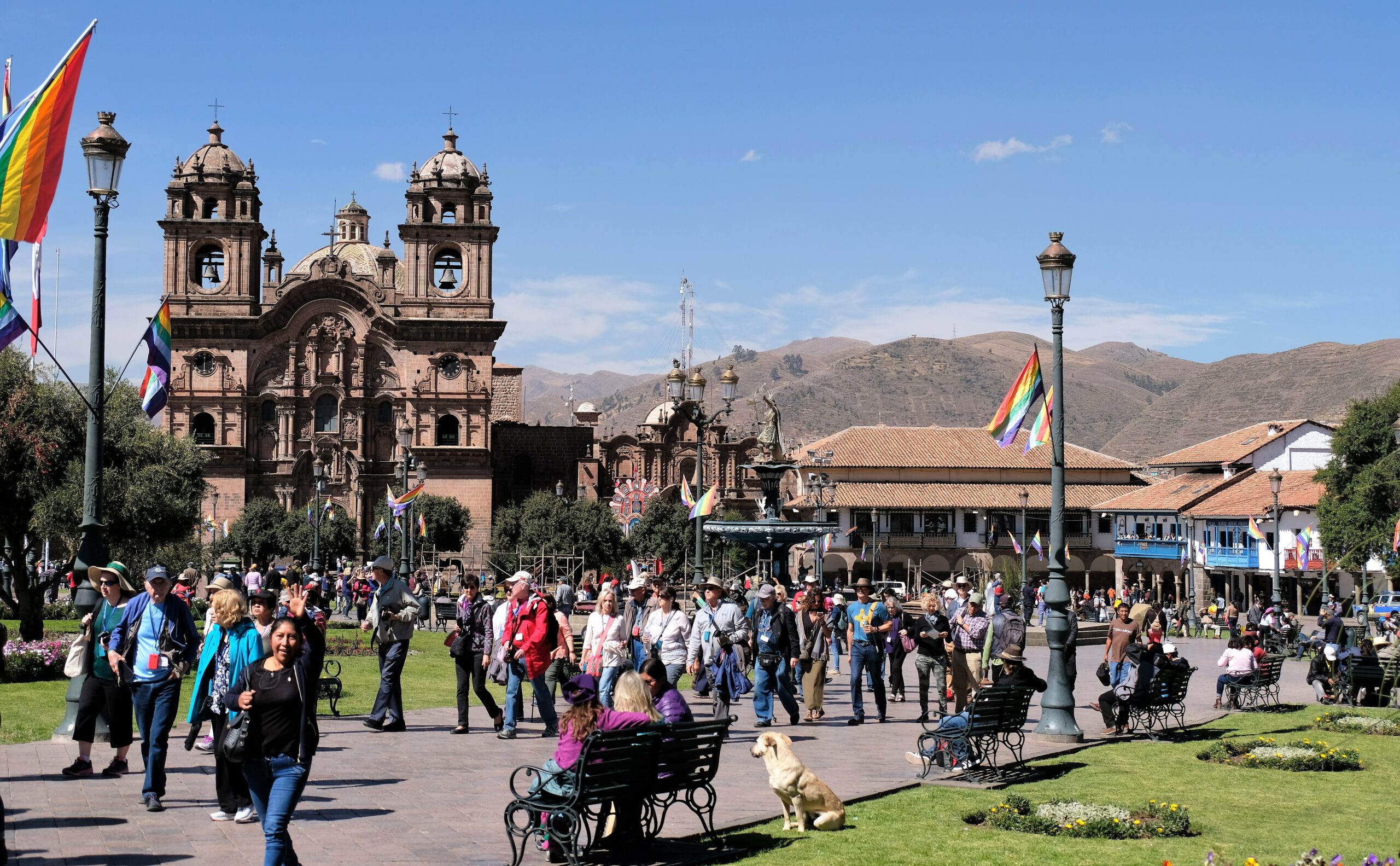
A brief about Cusco
For me, Cusco has three parts. Firstly, the Inca period, one of the main reasons people visit. Secondly, the Spanish era, another reason people come to visit; this part of Cusco is within Centro Historico/Historic Centre (lots more about this later). Finally, the surrounding areas where the locals live; what I like to call the real Cusco of today. A broad description of Cusco would be a charming old dusty town, with strong Spanish influence (especially in the Historic Centre) set in an inhospitable far away mountainous destination. Hills and mountains pincer the town set in the valley. Though the area is quite green (with lots of little rivers and streams) it has an arid feel; it could be a combination of the dryness in the air and altitude which makes the back of your throat constantly feel dry – it could just be me.
Just like many remote Spanish towns its signature trademark is steep windy roads, many cobbled, and more steps than I’d care to think about! Cusco would be just another forgotten place that nobody would visit if it weren’t for the Inca sites and historical centre. With a checkered history, varied and intriguing, making it a fantastic place to visit. I would easily imagine many people may not like Cusco. For me, the more I reminisce about it the more I love it. Even with the up’s and down’s I had there (nothing to do with the people or place ?).
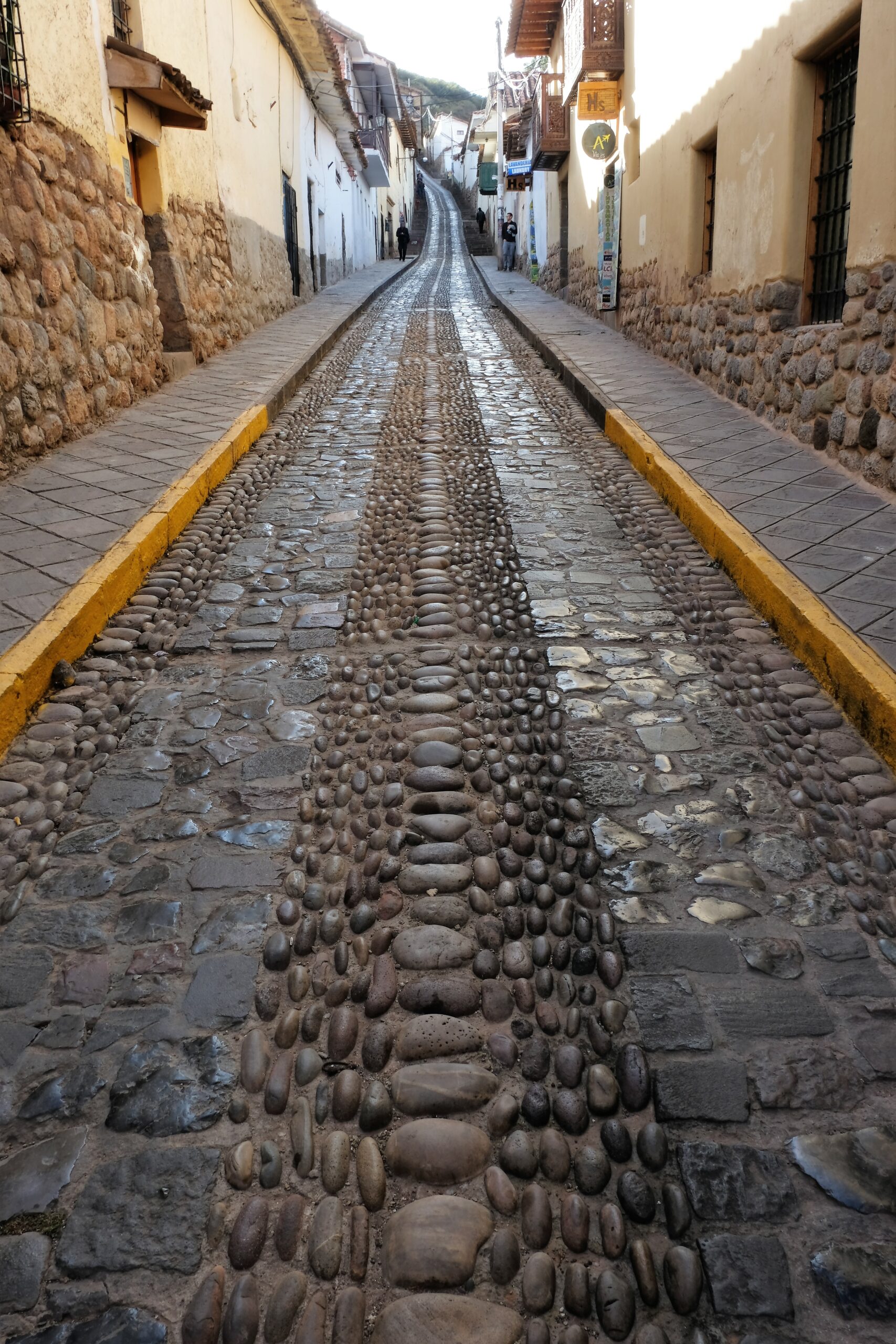
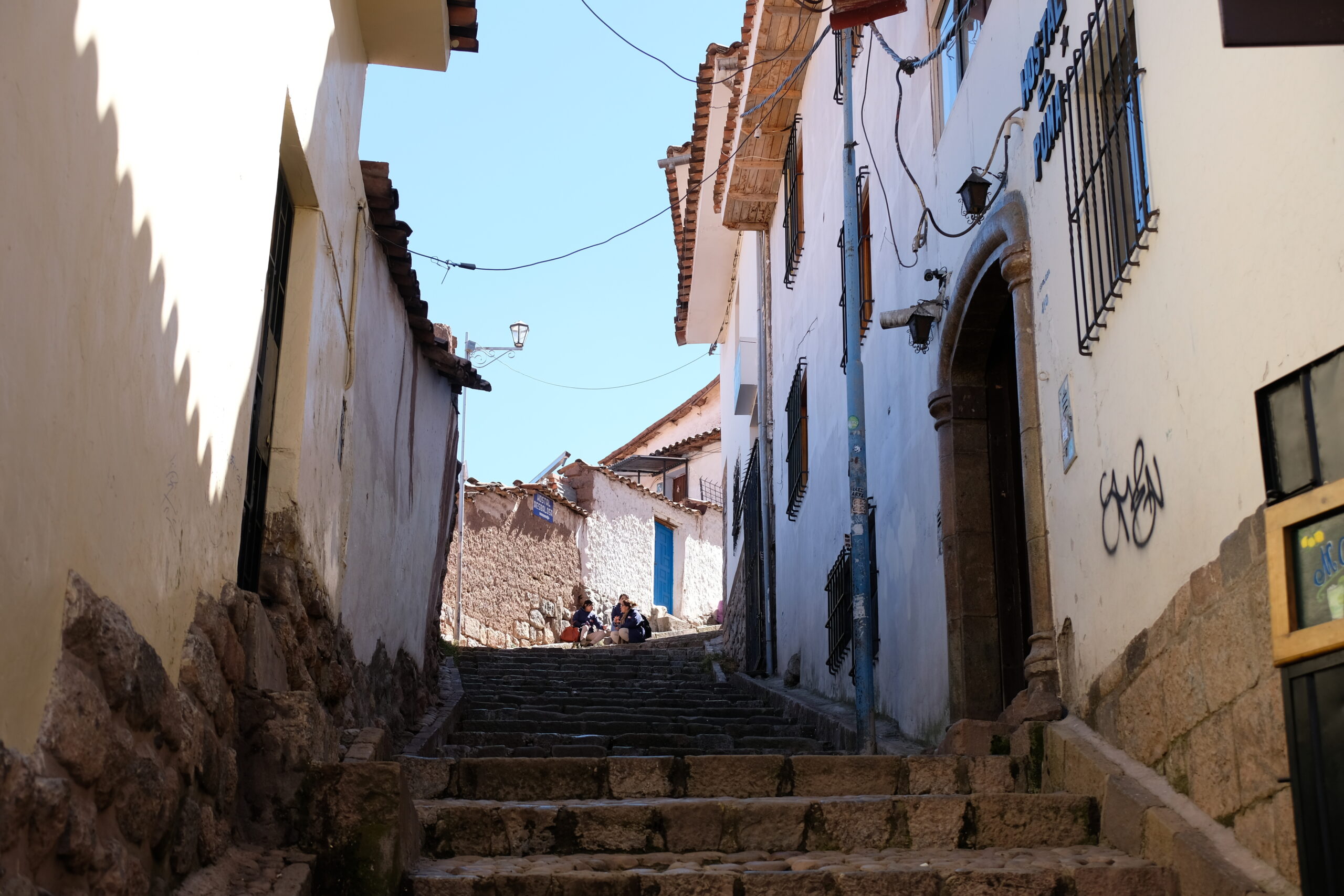
Archaeological Site Multi ticket
“Boleto Turistica del Cusco” (BTCI) is the official Cusco tourist ticket, this multi-ticket may not be for everyone. If you’re planning on seeing a few sites in Cusco and others in the surrounding towns then it’s a must money saver. You can buy it for any of the major sites (99% confident of this) or tourist office, I bought mine at the entrance of Sacsayhuamán. It cost me 130 Soles (about $40) which give you access to 16 places (sites and museums). There is a partial ticket, but I don’t know the price nor what it includes. Some of the museums didn’t clip my ticket, I didn’t visit them all either.

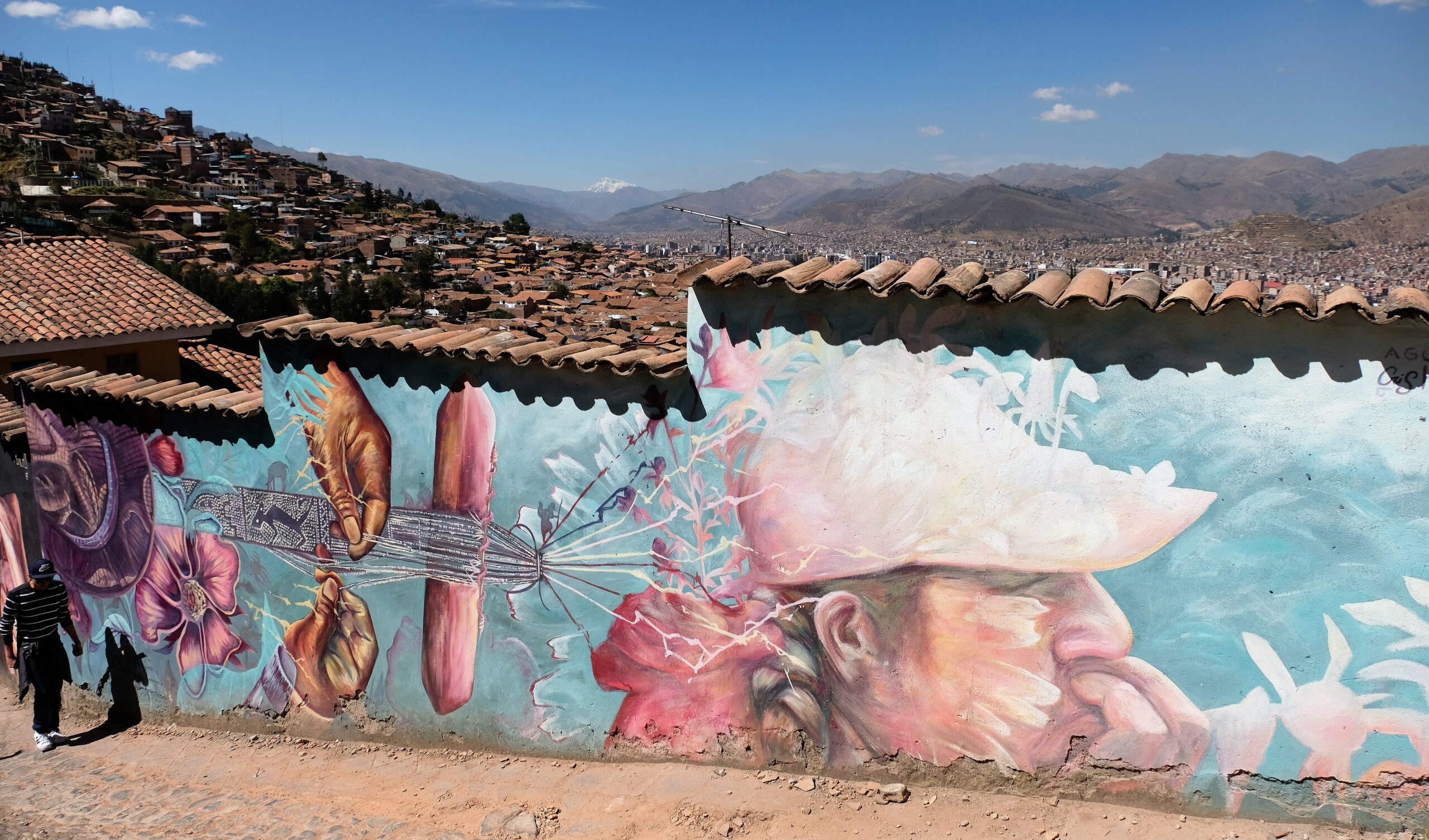
Mount Ausangate/Auzangate in the distance – Cusco, Peru
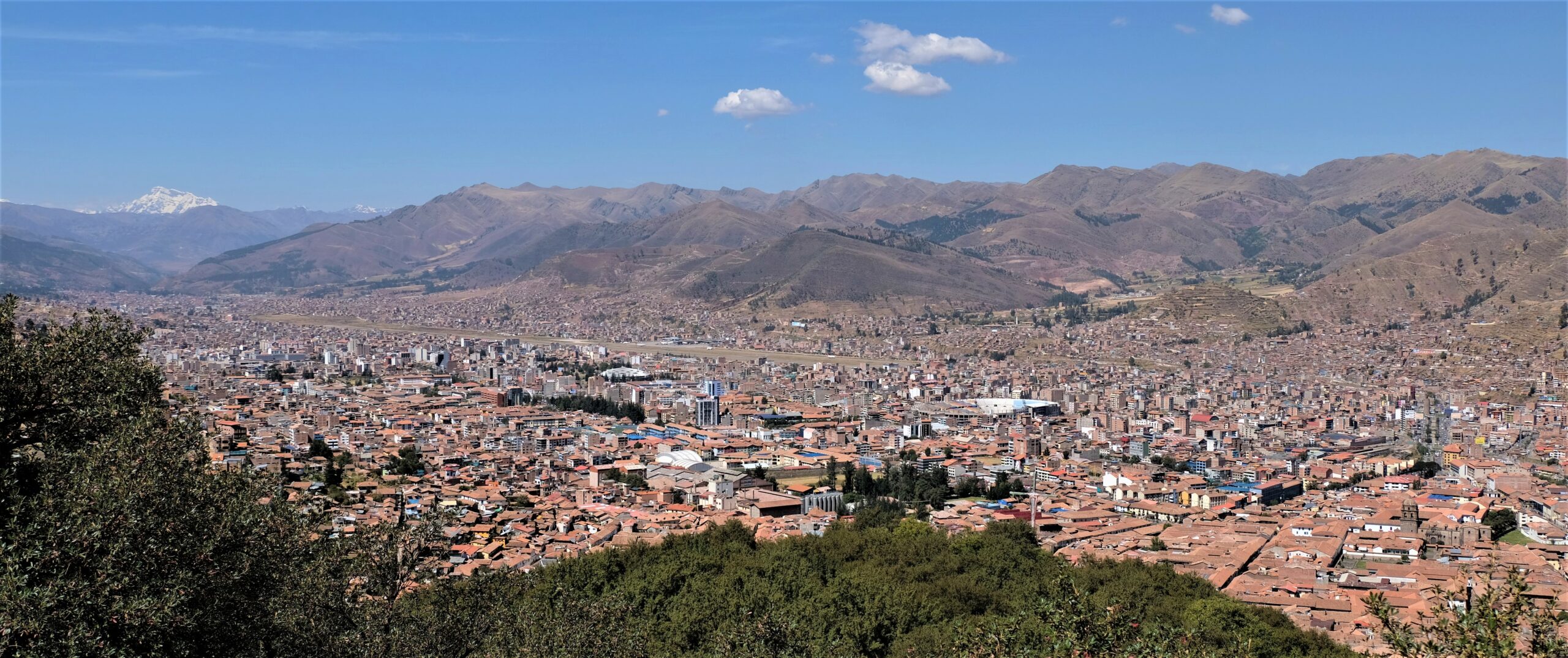
Sacsayhuamán / Saqsaywaman
It has a few spellings which I’ll include shortly, however in short it along with Cusco town centre was the capital of the Inca empire! From every corner of Cusco Sacsayhuamán is visible; it peers down from the top of the highest buttressed hill, the size and scope only fully realised when you get there. Ah yes, the hill! Keep in mind how I was feeling, the route to Sacsayhuamán was an achievement in itself! Hiking with a “hangover” makes even the slightest thing a herculean effort and it was well worth the effort. I climbed the hills around Cusco a few times in a much better state, some of the roads and stairs are steep and a bugger to climb. My tip, just take it easy and don’t rush.
Saqsaywaman, Sacsayhuamán, Sacsayhuaman, Sacsahuaman, Saxahuaman, Saksaywaman, Sasawaman, Saksawaman, Sacsahuayman, Sasaywaman or Saksaq Waman…yup that’s all the various spellings! The exact origins of its name aren’t certain, one theory is that it could be taken from the Quechua words “sacsay” and “waman” meaning satiate/satisfied and falcon/hawk respectively.
First impressions, WOW! Huge rock structures like walls, buildings and who knows what else unlike anything I had seen before. Whereas at other ancient sites I’ve been to, the rocks are cut at right angles making them easier to stack/fit. Here, the joins are rounded and shaped resulting in no uniformity, each join is unique. It’s not like they didn’t have the technique to make flat surfaces; throughout all the Inca sites I say there are thousands of areas where they’ve cut square edges into rock. Sacsayhuamán’s walls look like a mammoth game of tetris except with rounded shapes. Yet the face of the rock is relatively flat, not totally with almost all of them having a rough convex profile.
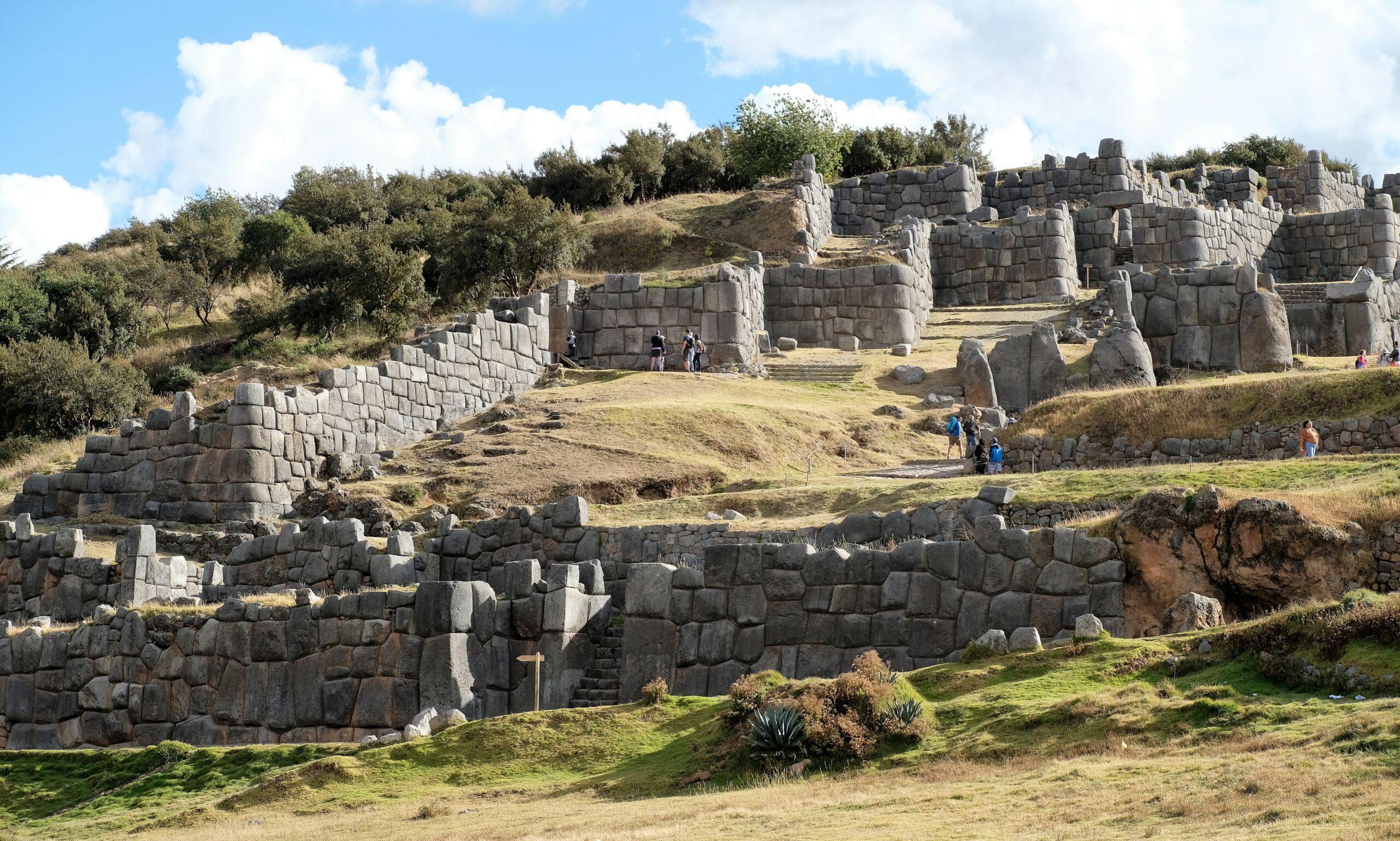

Sacsayhuamán / Saqsaywaman history
This is the citadel of the Incas, what was its magnificent capital. Those who lived inside and within close proximity to Sacsayhuamán were likely royalty, priests etc. maybe the uppermost echelons of society too. The Killke Culture were the former, possibly first occupants of the region and had built a large temple complex on the site around 1100 – to what extent isn’t known. The Killke were an established culture and people which had occupied the region from 900 till about 1200. At which point it coincided with the expanding Inca Empire who settle in the region and made it their capitol. Other than a few bits and bobs I couldn’t find much information about the Killke Culture, don’t know why.
During the 13th century the Incas expanded Sacsayhuamán; with the hilltop was substantial fortify. Today, it is a skeleton of its former magnificent self; the Spanish substantially dismantled it. Cusco’s Spanish era buildings are scattered with remnants of stones which once proudly formed part of this enormous complex (many can still be seen today).
Sacsayhuamán sits at around 3700m altitude, built mostly of andesite; andesite is the volcanic equivalent of diorite, a hard rock like granite. Some of the larger stones that terrace the hill and line the plaza (these walls are around 400m in length) are around 6m high with weights ranging from 120 to nearly 200 tonnes! The walls lean inwards at a slight angle; this feature, in conjunction with them being fitted so well (without the use of mortar) is the reason Sacsayhuamán and many other Inca ruins have survived numerous earthquakes. When I say the stones fit well, you can’t slide a piece of paper between them. How they achieved this with all the different shapes will likely stay a mystery.
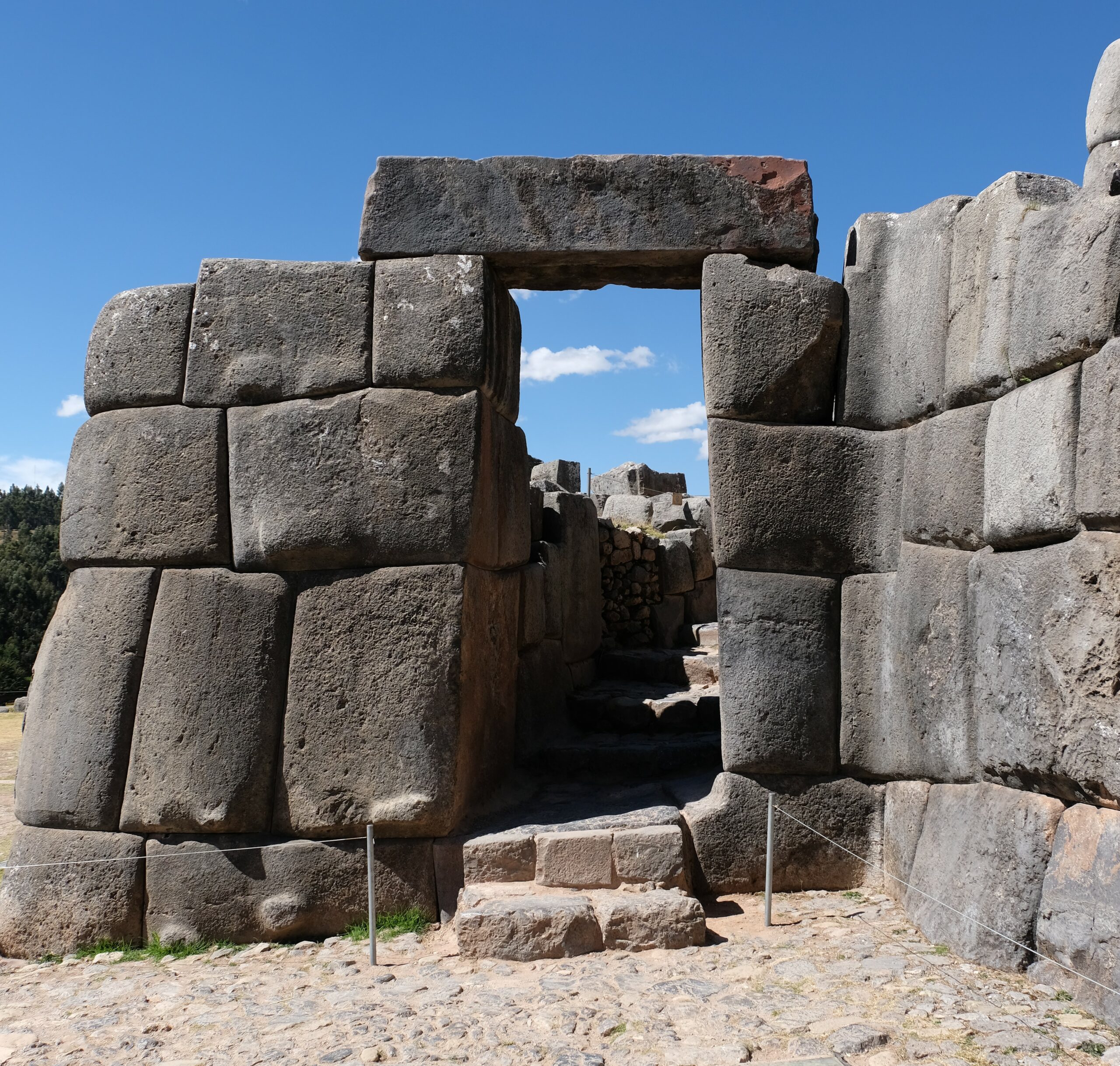

Spanish conquest of Cusco
The Spanish arrival coincided with an Inca civil war between two brothers, Huáscar and Atahualpa. It was a brutal war that depleted both armies and created an environment of distrust. For a brief summary; Huáscar was the Sapa Inca (“the only Inca”, “mighty Inca”, “the only one” aka Emperor), and for Incas the Sapa Inca was divine. Huáscar was based in Cusco and Atahualpa was based in the North. Exactly what started the war isn’t clear (most likely jealously); available information is one-sided in favour of Atahualpa. Nevertheless, Atahualpa was triumphant and therefore ascending to Sapa Inca, though he kept his brother captive and didn’t kill him…yet.
Jumping forward to the battle of Battle of Cajamarca (16th November 1532). Francisco Pizarro González, more commonly known as just Francisco Pizarro, was the Spanish conquistador who led the conquest of the Incas. During the Battle of Cajamarca and outnumbered some 45 to 1, he tricked Atahualpa into a meeting where he captured him taking him hostage. I’ll cover this in more depth in a latter post when I visited the Temple of the Sun. With 2 Sapa Incas captive (Huáscar was being held by Atahualpa’s army), Atahualpa had to play his trump card as an insurance policy for his release. Conscious that his brother could make a deal with the Spanish, Atahualpa had his brother killed, thus eliminating the possibility of the Spanish negotiating with Huáscar.
Atahualpa paid a ransom in hope the Spanish would free him. The cost? All the gold from the Temple of the Sun, its walls lined with gold. The ransom didn’t work and Atahualpa was eventually killed by strangulation with a garrote (26th July 1533). In order to prevent his execution by burning at the stake he had converted to Catholicism; for the Incas being burn to death would mean the soul would not travel to the afterlife.
Cusco and therefore Sacsayhuamán, fell to the Spanish on 15th November 1533. After the murder of Atahualpa the Spanish installed his brother Túpac Huallpa as the Sapa Inca with great pomp and ceremony, this was a ruse; the Spanish needed the Inca to believe they were still being ruled by one of their own. Tupace Huallpa died in October 1533 (don’t know how). Manco Inca Yupanqui (1515 – 1544) another brother, succeeded him as the new puppet Sapa Inca. He eventually led a fight back for the Inca Empire starting at Cusco in the Siege of Cusco in 1536, it lasted 10 months, however, was unsuccessful – more about that in another post.

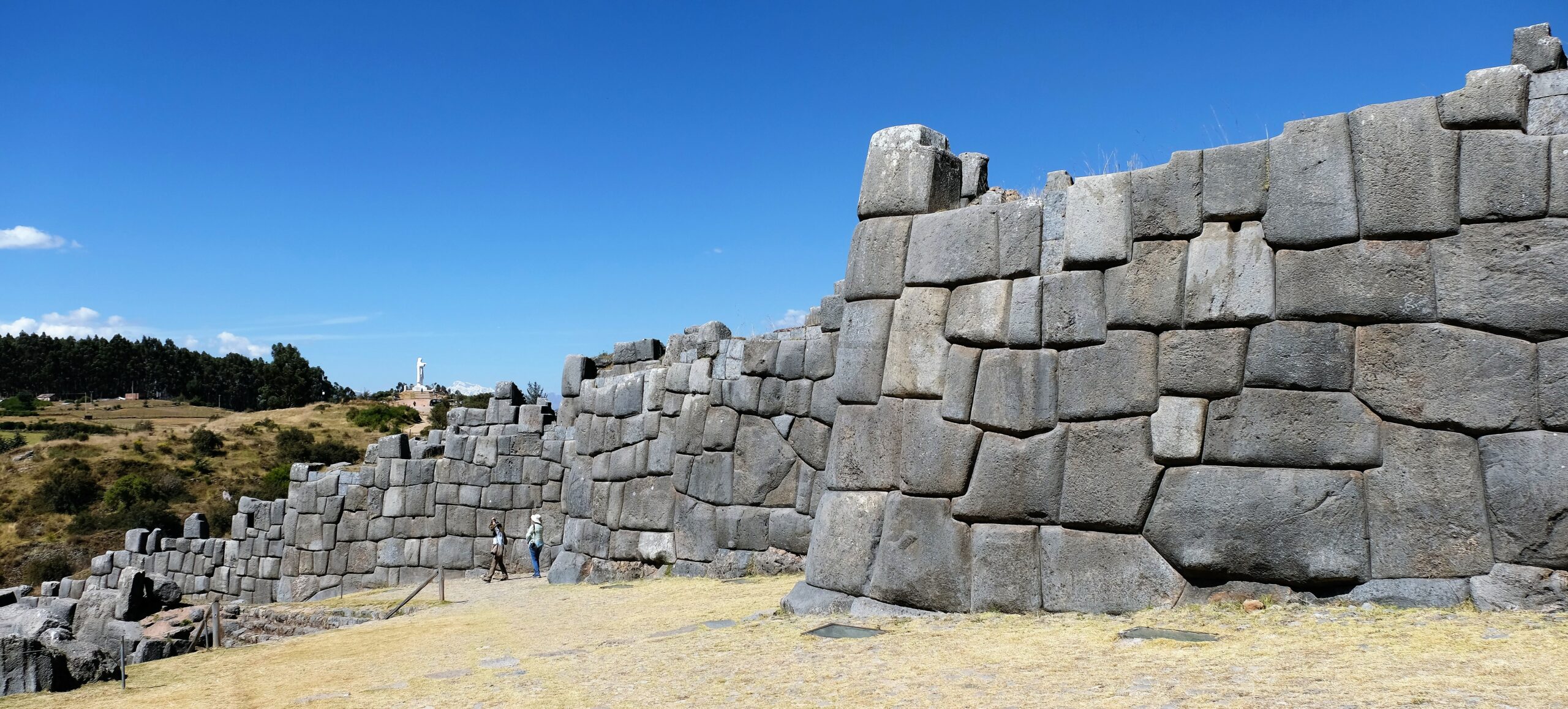
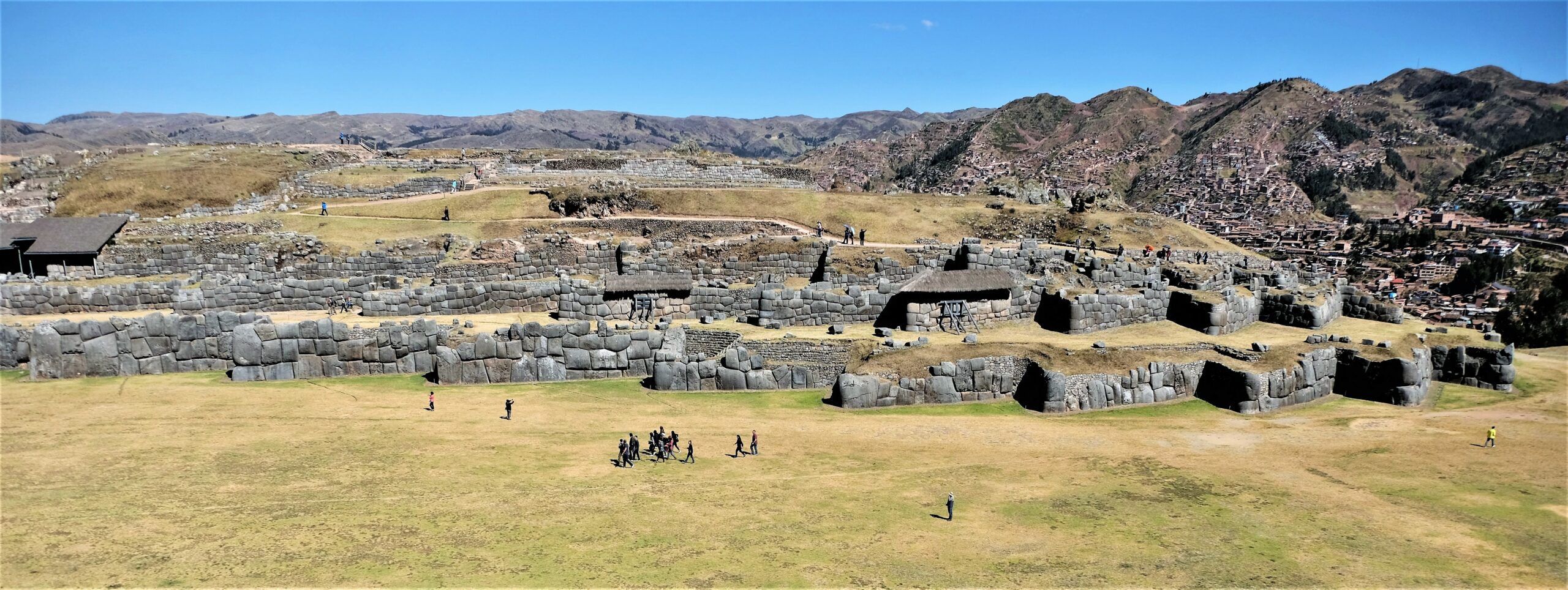
Sites, splendour and intrigue of Sacsayhuamán / Saqsaywaman
The City of Cusco is a UNESCO World Heritage site so you would think you could find an abundance of detailed information about its archaeological sites; Sacsayhuamán is the biggest archaeological site, so you would imagine every inch would be labelled with a full description. Not so at all! I was, and still am, disappointed at the lack of information about Cusco’s sites. Of the sources I found have variances, meaning there are a lot of grey areas too; most of what I found regurgitates the same information with a few changes here and there.
I’ll tell you what I saw, think and try including as much of the information I managed to find and corroborate. There are four parts to Sacsayhuamán: Firstly, the “fortified” structure with the huge stones. Secondly, the large plaza (esplanade) area. Thirdly, a separate mound on the other side of the plaza/esplanade that includes the suchuna/rodadero. Fourthly and last, the area past the suchuna/rodadero that includes an “amphitheatre/arena” and loads of other structures. The latter, the size of the first three combined easily.
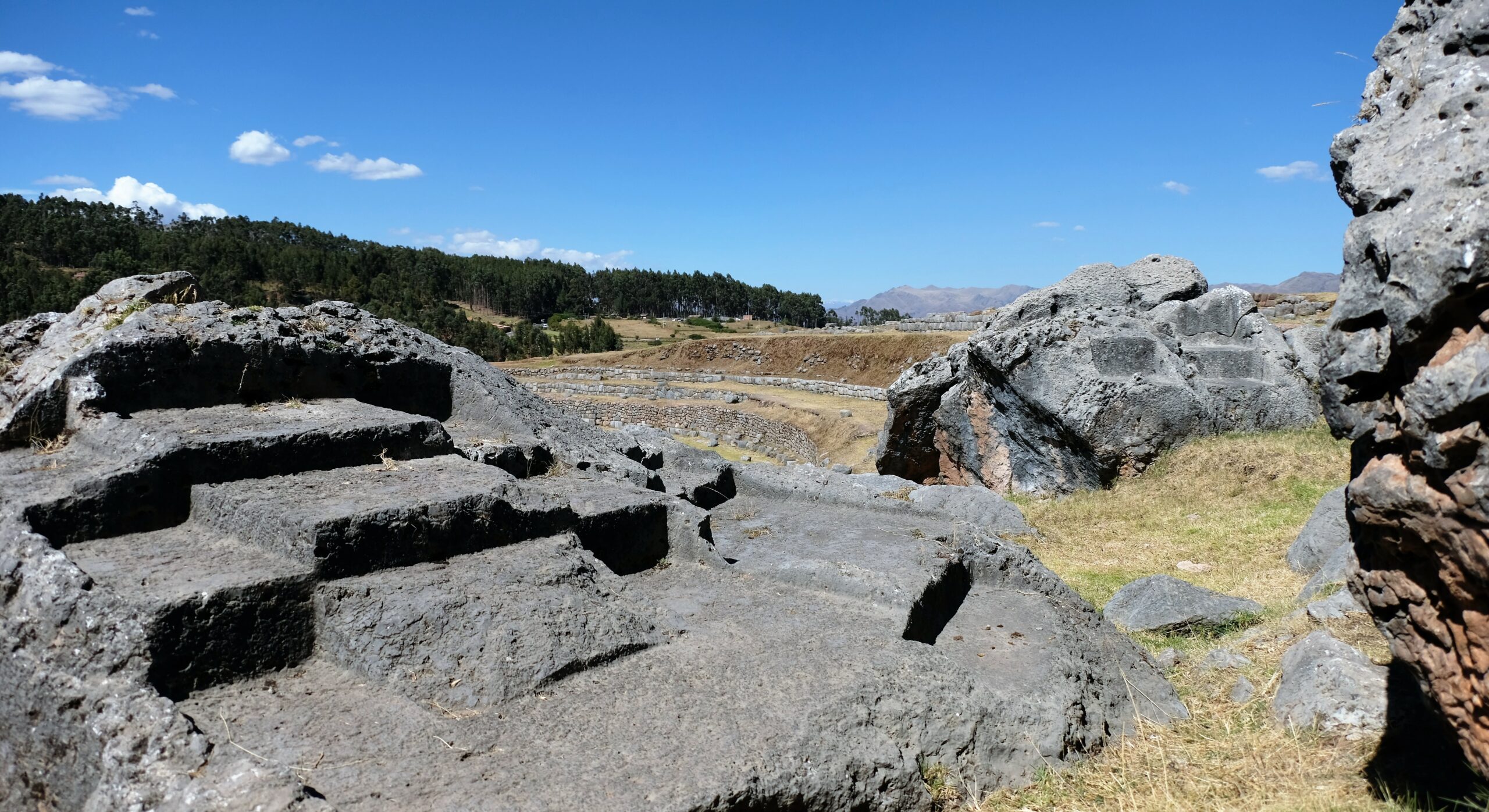
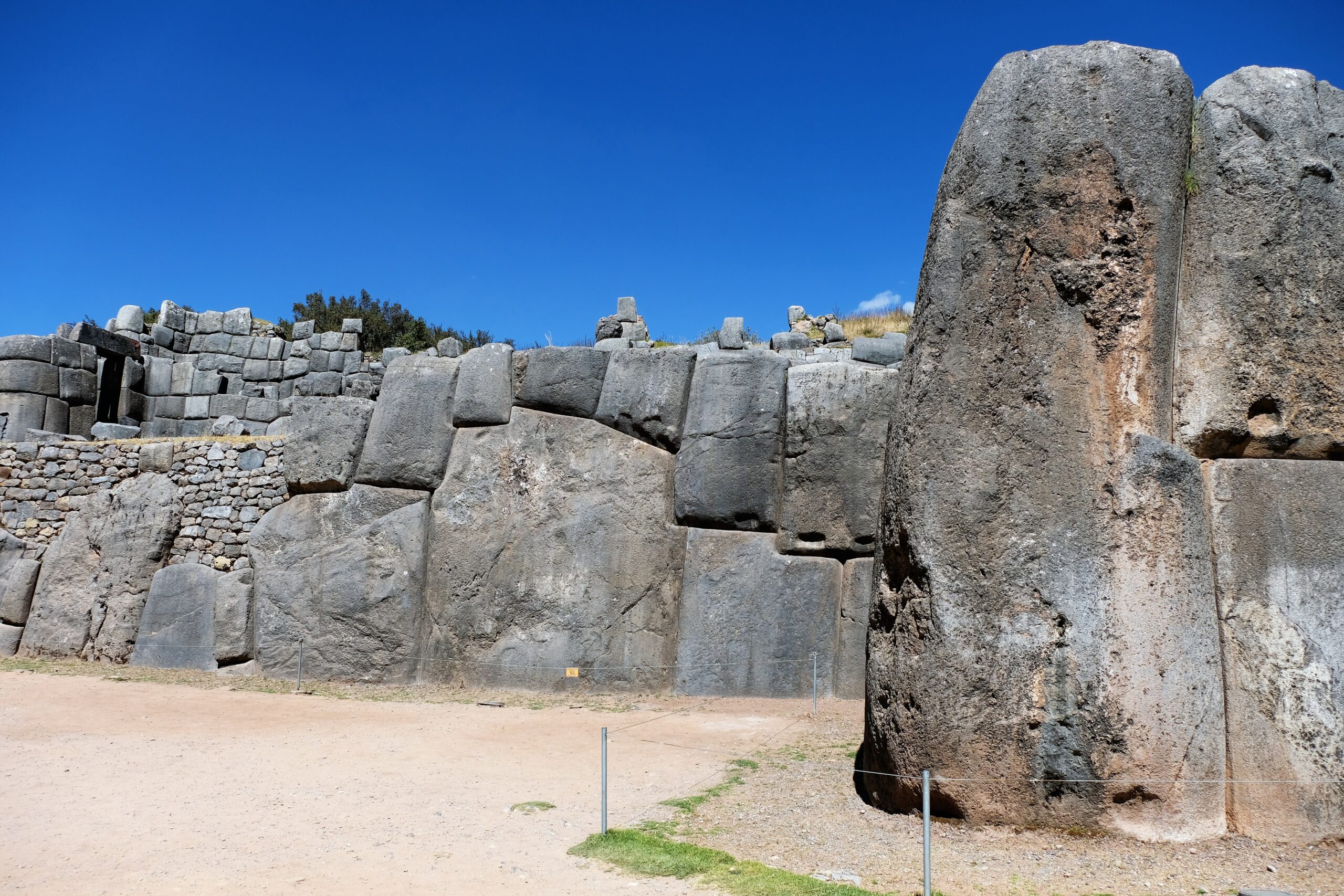
Back to my visit! I can honestly say visiting Sacsayhuamán lifted my spirits. Far from feeling 100%, the visit was the perfect boost I needed. My mind drifted of as a walked along. Taking in everything I saw, and imagining what the place must have been like in its zenith. Worked stone/rock is everywhere you look, and I mean everywhere! To fully explore the fourth area would take days if you wanted to see every nook and cranny let alone the whole of Sacsayhuamán.
What I found most intriguing was how the bedrock and huge boulders lying about had been worked. Most of the large stones that line the plaza/esplanade were brought here from 20km away, an astonishing feat to think! Why would this be necessary when there is so much rock right here. Along with that, the wall joins are various shapes with rounded edges and joins. Yet throughout Sacsayhuamán the natural rock (especially section three and four) is cut/worked into square edges. Not just in one or two places, I mean everywhere.
This is something I would see throughout my time in Peru at nearly every Inca site. What I can’t understand is where are these “square” rocks now and what is the purpose of making these square/perpendicular niches? Some look like stairs, some look like little altars, some look like podiums. Sure, they may have cut them and then reworked them to fit into the walls, except so many of them seem to have another purpose, but what? For the remainder of my time visiting Inca sites this and so many other questions would consume my mind, they still do.


Sacsayhuamán / Saqsaywaman Towers
Long now dismantled from their towering hights, the fortress section used to have three towers. The Inca named their towers, entrances and other important places (there are a few variations of their spelling):
- Muyacmarca: In Quechua “muyaq” means round, “marca” means population. Muyacmarca was by far the biggest of the three towers. Reaching circa. 20m high it would have had amazing panoramic views across the whole Sacsayhuamán complex, Cusco and beyond the valley below. Consisting of three concentric circles with joined by radial walls like internal buttresses. Thought to have 4 floors, with external terraces and a fountain or reservoir at its centre; channelled with a comprehensive system of aqueducts. Though it was part of the “fortress”, Muyacmarca was in fact a Temple of Inti (Sun God); possibly the Incas most important god which I’ll cover in a later post.
- Paucarmarca: “pauca” means lively/beautiful, cheerful, garden. Paucarmarca could have been a dedication to the stars, then again, I couldn’t find much information about it. Re-covered after excavation, now it’s a mound of sand and grass.
- Sallaqmarca: “sallaq” means rough/rocky. I couldn’t find any real information about Sallaqmarca, other than it was rectangular like Paucarmarca – only its foundations remain.
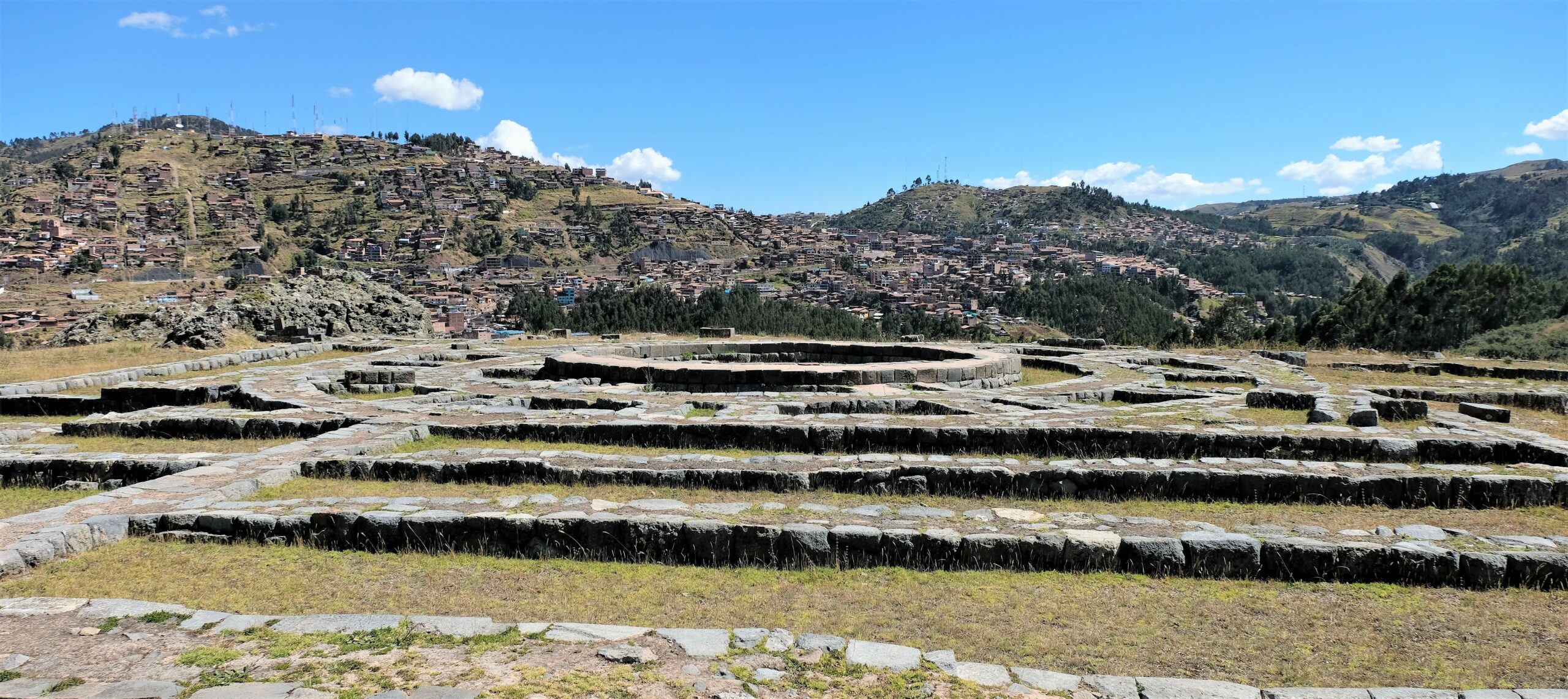
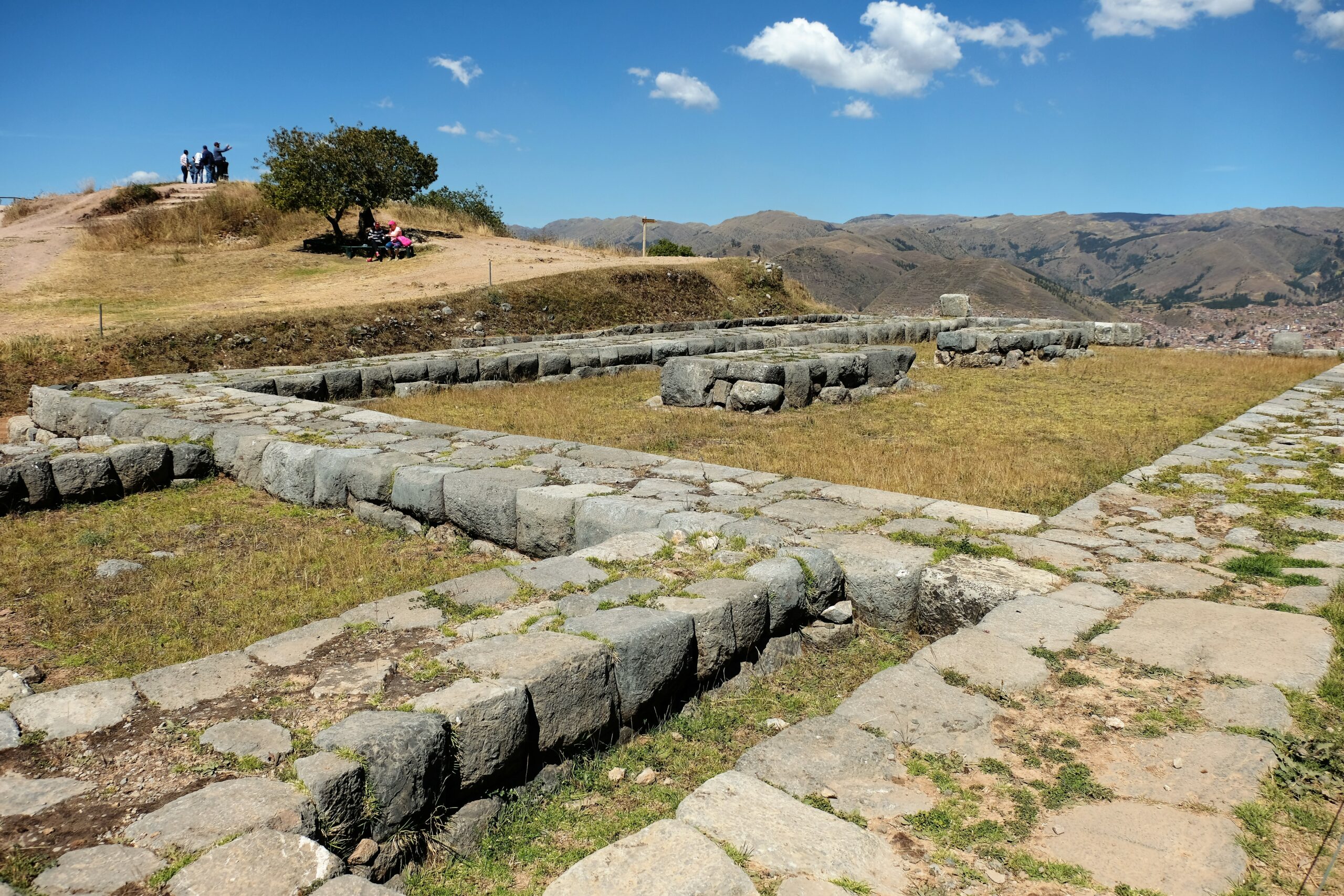
The Grand Esplanade / Chukipanpa
Chukipanpa meaning “spears plain”, divides the fortress area from the rest of the complex. It is thought the esplanade was a waka/huaca, a revered place. Here is likely where the Incas held ceremonies, celebrated festivals and other important events. One such event was the Inti Raymi’rata; a religious ceremony in honour of the god Inti. Held/conducted on the winter solstice, Inti Raymi was the start of their New Year. Inti Raymi was the most important ceremony of the year. The esplanade cuts through the complex like a wide river banked on either side by the fortress and the natural rock mount.

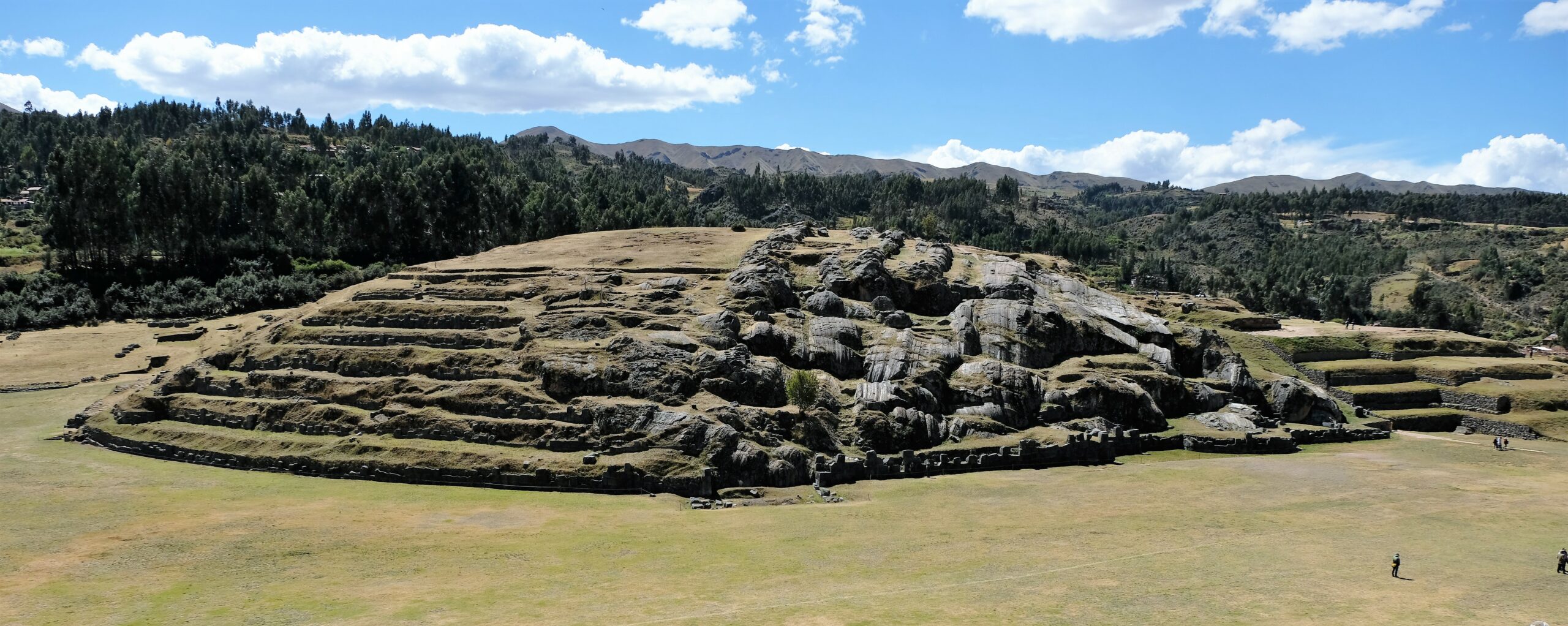
Throne of the Inca
Located on a natural rock mound which has been terraced on either side (roughly), the middle left natural. The surrounding area is punctuated with stonework. Called K’usillucJink’ian, meaning “where the monkey climbs”. Hmmmm. Whilst I can see why it’s called a throne, (with a great position overlooking the esplanade), it is unlikely to be an actual throne. If this cut-out into the stone is a throne, then there are dozens of thrones throughout the complex. That being said, Throne of the Inca is a great example of rock worked into square cuts; with equally step sizes like a mini-step pyramid. Despite my scepticism, the Throne of the Inca does look more purposeful.
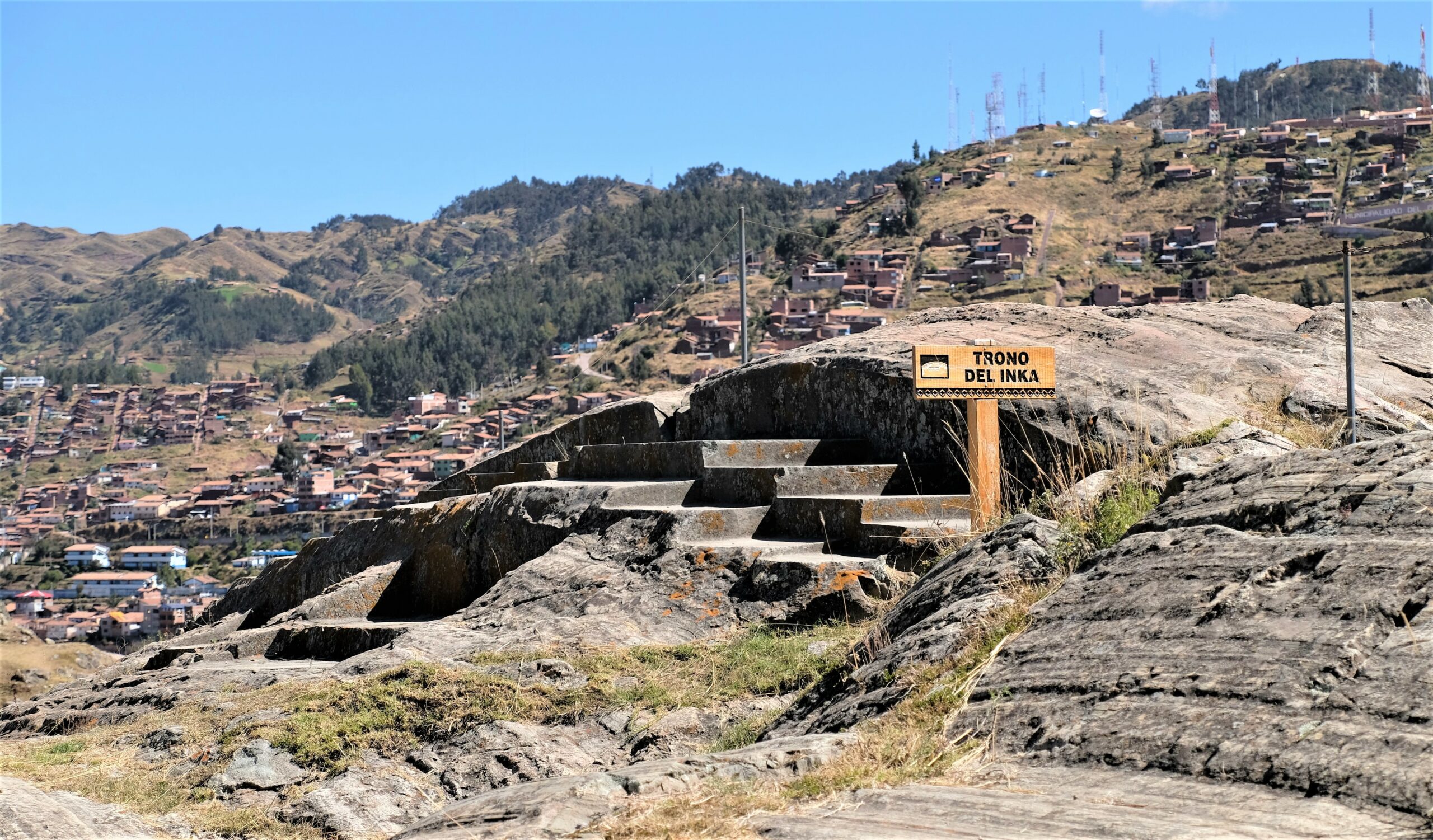
Suchuna / Rodadero
The Suchuna/Rodadero or “sliding spot”, does what is says on the tin. Whether or not the Incas used it as a slide who knows. You can slide down on your butt, that’s how smooth it is (you’re allowed to). With only a section being smoothed, either side is naturally rough. Suchuna was either worked by hand to smooth it, or it was the Inca’s playground slide and became smooth due to repetitive use.
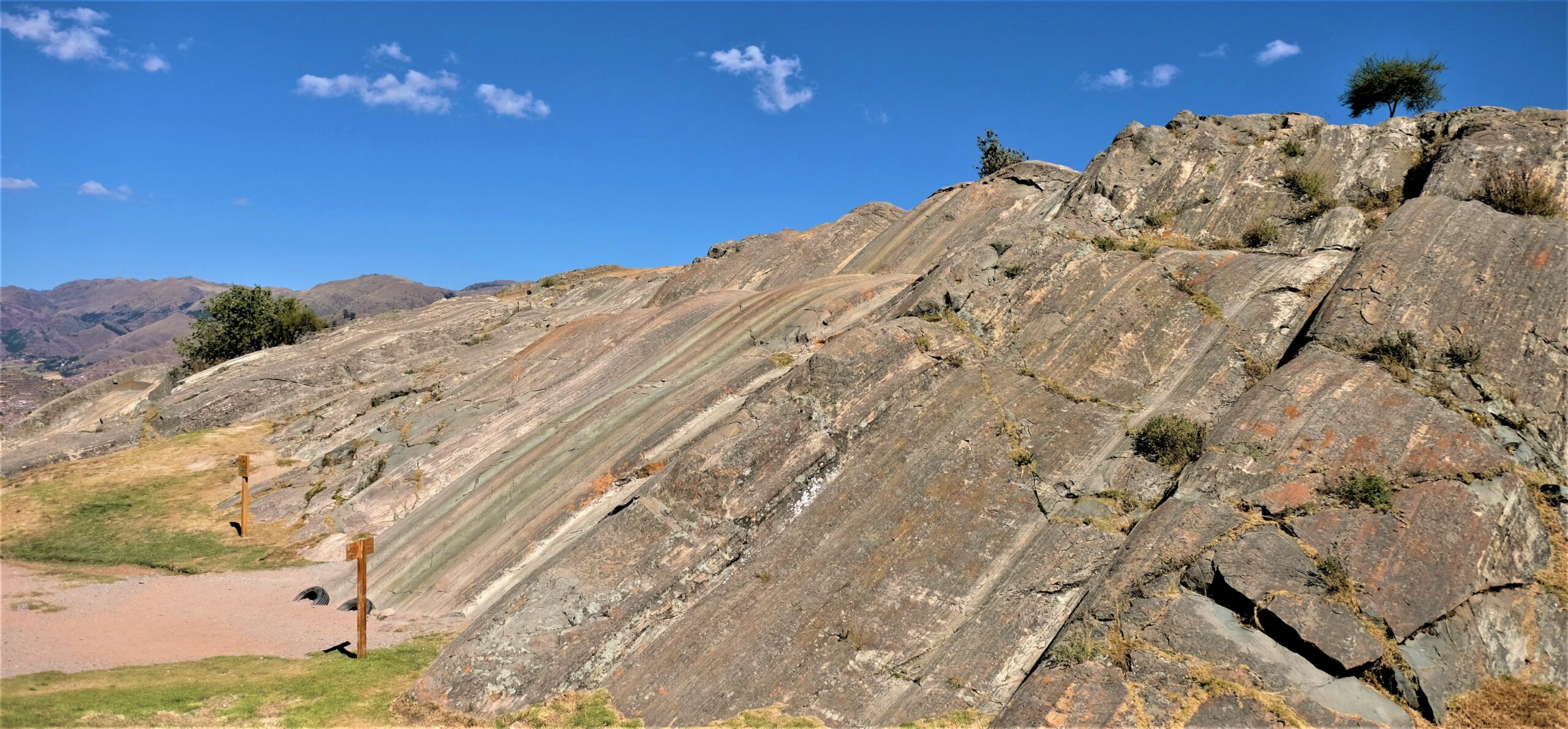
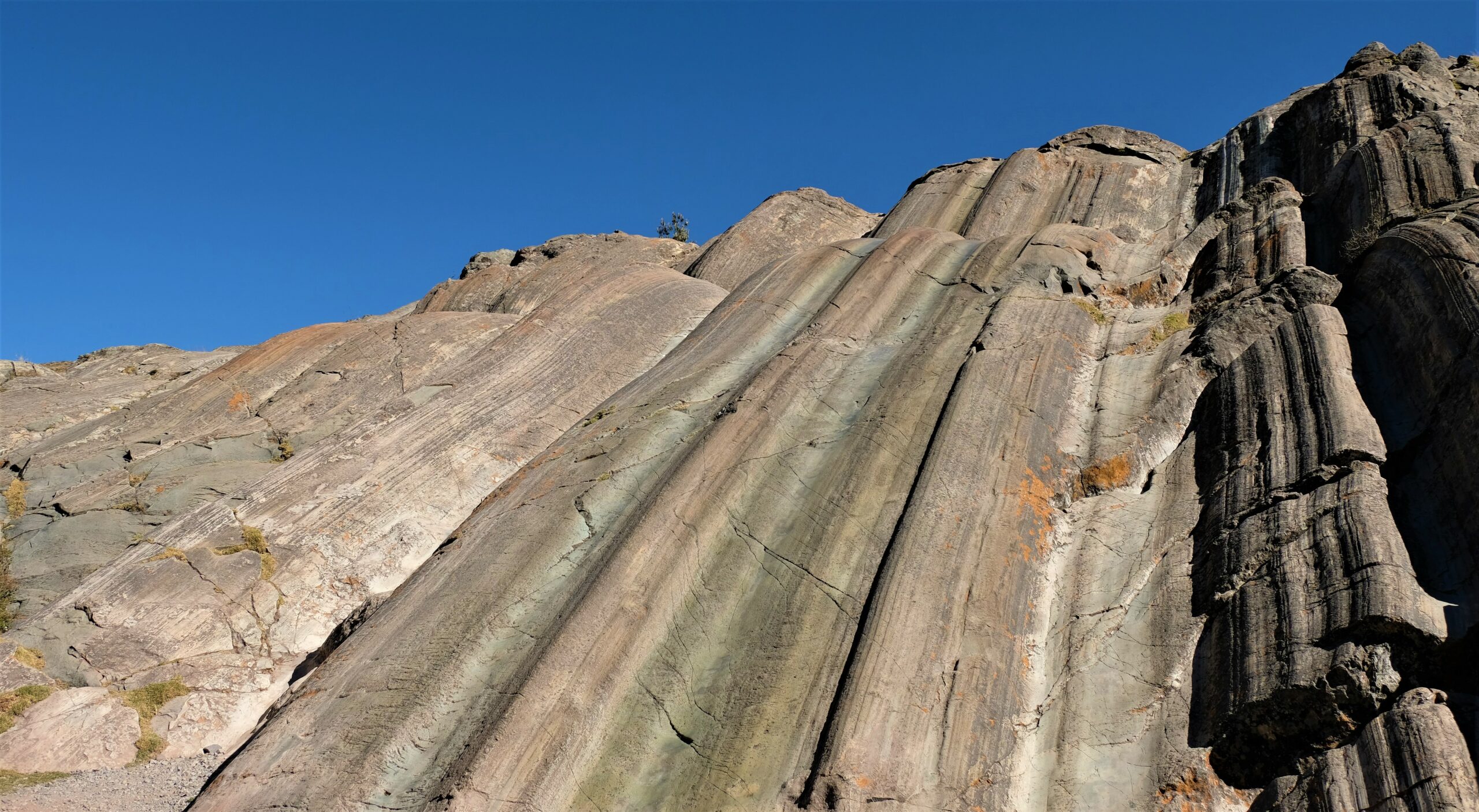
Chincana
There are two of these “grande” and “chica”, chincana means “place where one is lost”. Chincana grande has been closed to the public for years (I think). More likely to have originated by flowing lava &/or water, later to be worked by the Inca &/or Killke culture (undoubtedly they have been worked by man). Chincana are shrouded in myths and legends but their actual purpose isn’t known – as with some much else regarding the Incas. Chincana chica is a short tunnel, but from broad daylight only 2-3m in it is pitch-black. I can’t remember how long the tunnel is, I’m guessing about 20-30m.
Part of the chincana legends say there are many of them, that the Incas built a network of tunnels throughout Cusco and their Empire. Of these tunnels, the most famous is one running from Muyacmarca inside the temple all the way to Cusco town square (Plaza de Armas). Legends tell a story of the tunnels were a means of transport across their vast Empire, linking their most important sites to each other. As with many of these types of stories Cusco’s chincanas have intrigue, gold, death and ghosts. Suffice to say these stories have not been explored but it does make you wonder. I found 3 other tunnels cut through the rock, more like passageways where you can see through to the other side. Even so, they are impressive; the longest only around 15m, which is still a feat of engineering and perseverance cutting through hard rock.
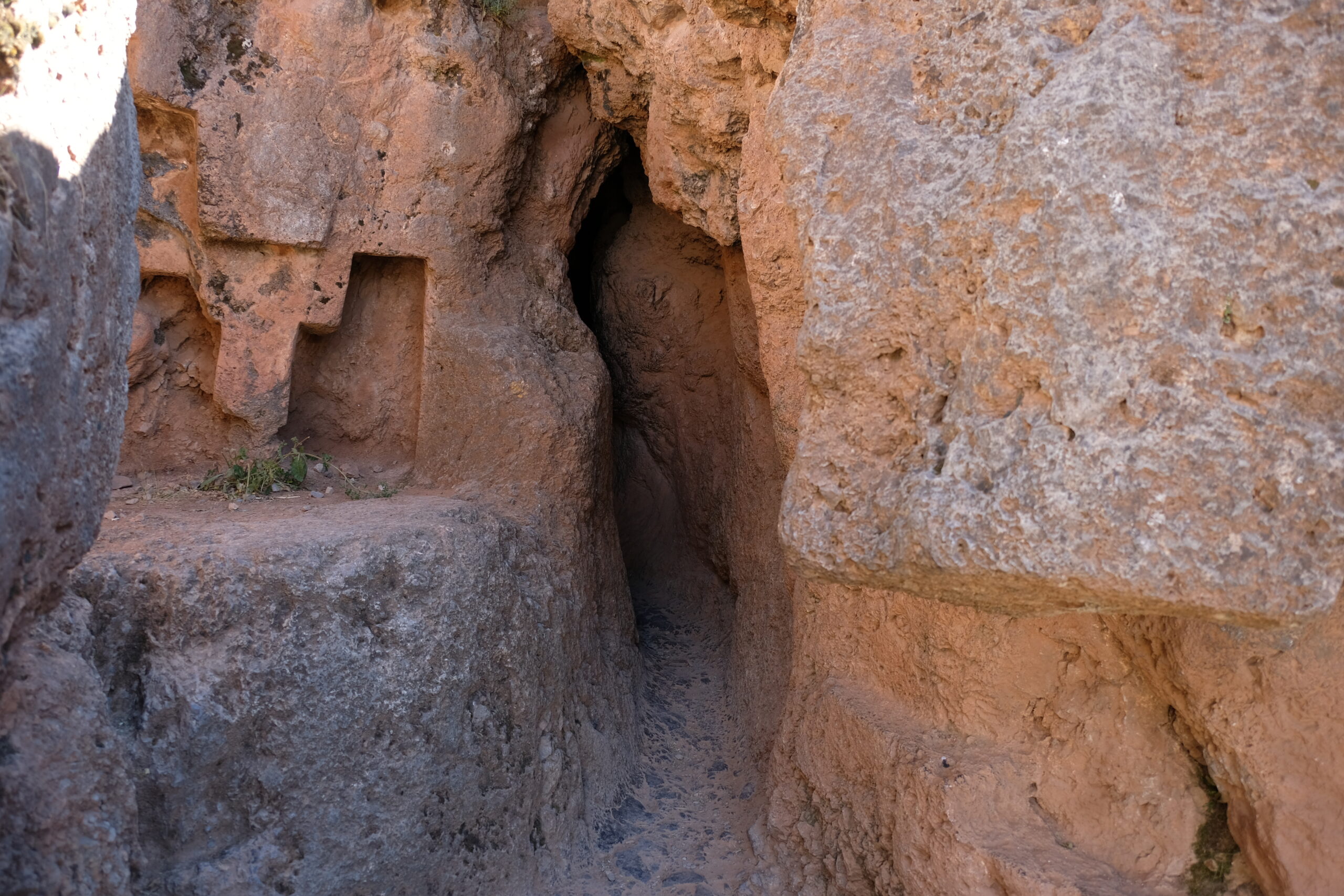
Muyukancha / Round Plaza / Qocha
Muyukancha covers a big area and is a focal point in this part of the complex (my section 4). Again, it’s exact purpose or function isn’t know. Some say it’s an amphitheatre, some a reservoir, others a Temple of Water, then there are those who say it was used in the burial process or a cemetery!? Personally, I can’t see this being a reservoir. With so many other examples of smaller reservoirs in the area (the closest 20m away), muyukancha doesn’t look like any of them; not in size, structure or layout.
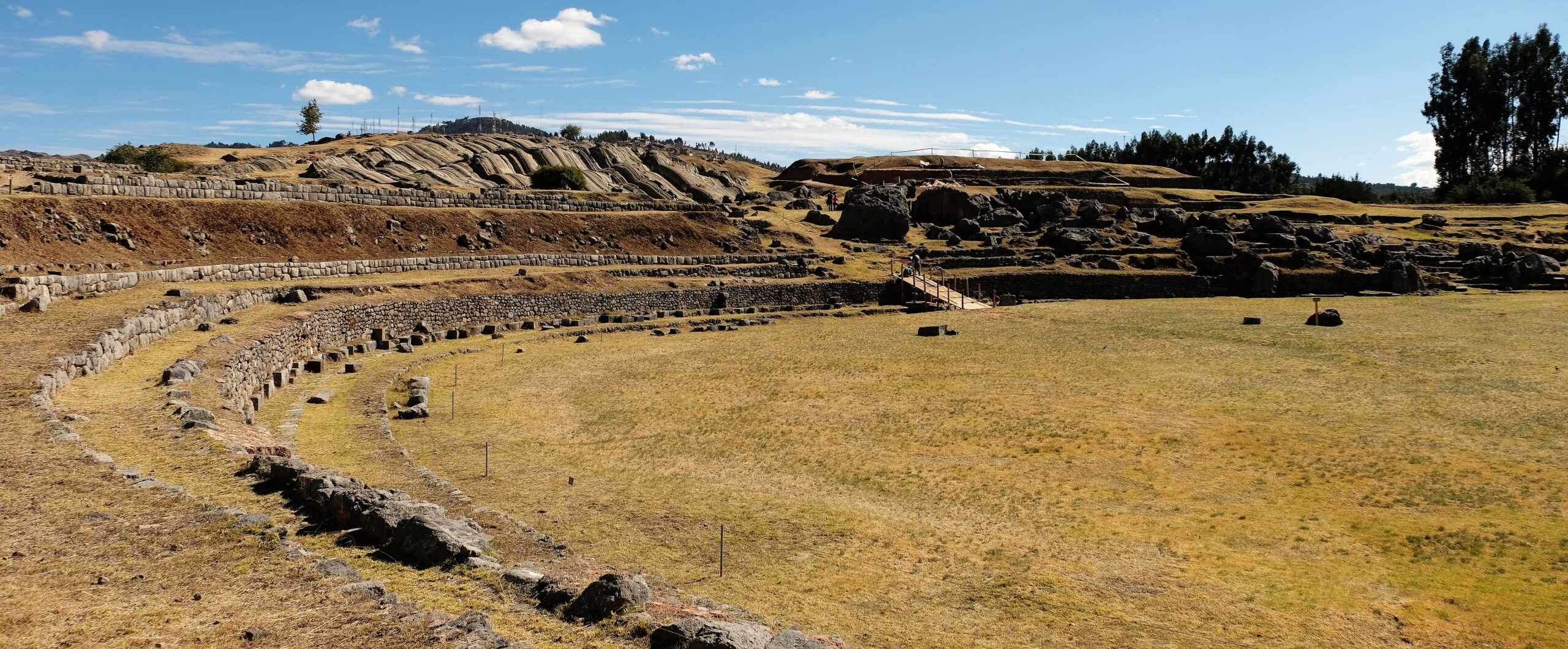
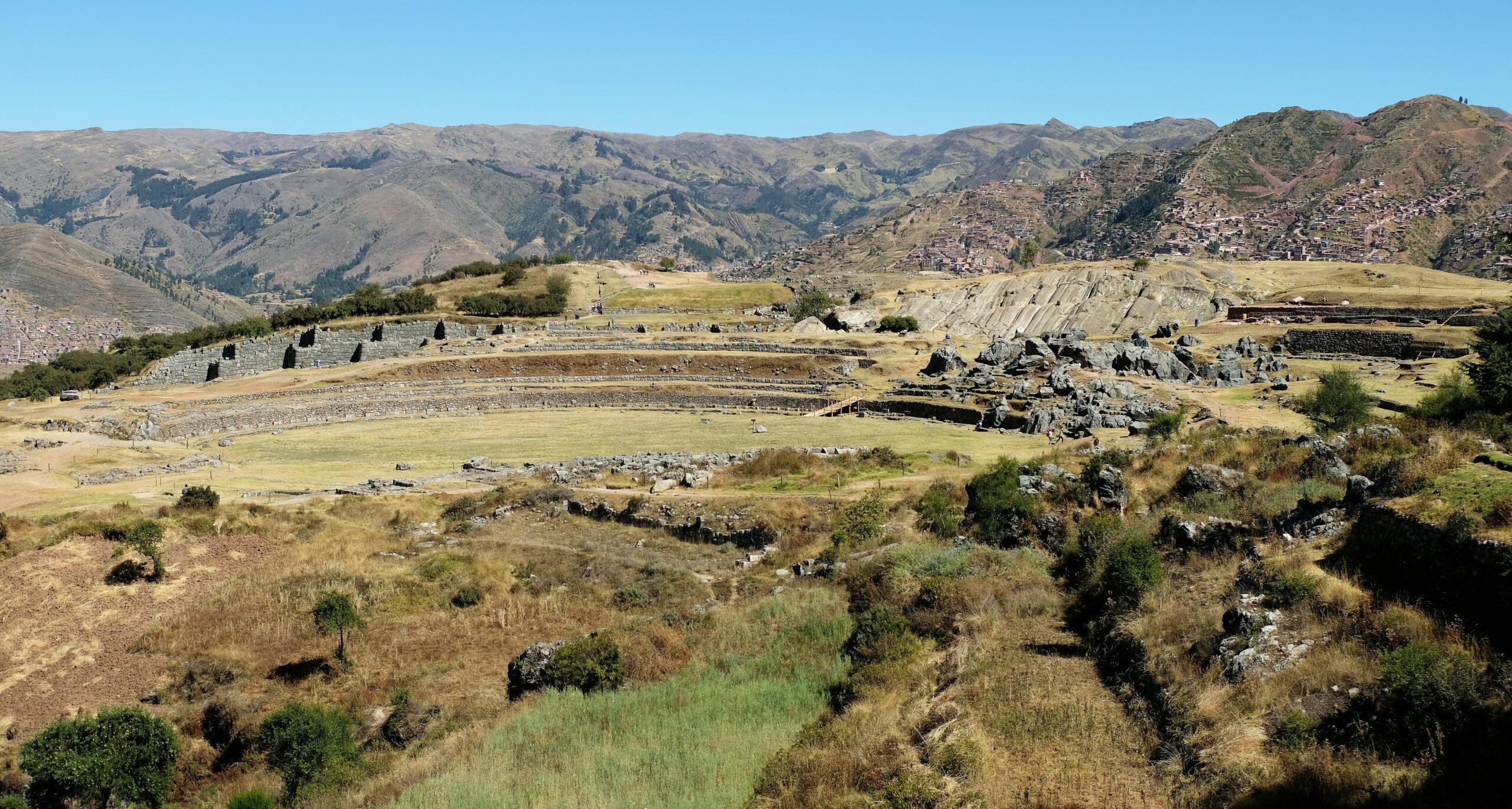
Tired Stone / Piedra Cansada
Rumoured to have an entrance to a chincana at its base, Tired Stone gets its name from a story written by Piedra Cansada. His story does have similarities to an Inca version of Romeo and Juliet. This colossal rock gets its name from a fable; the stone was being take to Sacsayhuamánmain’s and added to the temple (tower), however whilst moving it it got stuck and was left there (that’s my bastardised version of the story).
If M.C Escher ever made a trip to Cusco, then Tired Stone was his inspiration for his Relativity stairs. There are so many niches and stairs of various sizes and directions it makes no sense at all! This rock epitomises my confusion of Inca sites. Their rockwork is everywhere but doesn’t fit the surrounding structures they built. One thing that I can say is, the panoramic view of Sacsayhuamán is fantastic. Granted, can’t see the whole complex, even so, it’s quite beautiful. I can’t help but imagine what it would have looked like at the pinnacle on the Inca Empire.
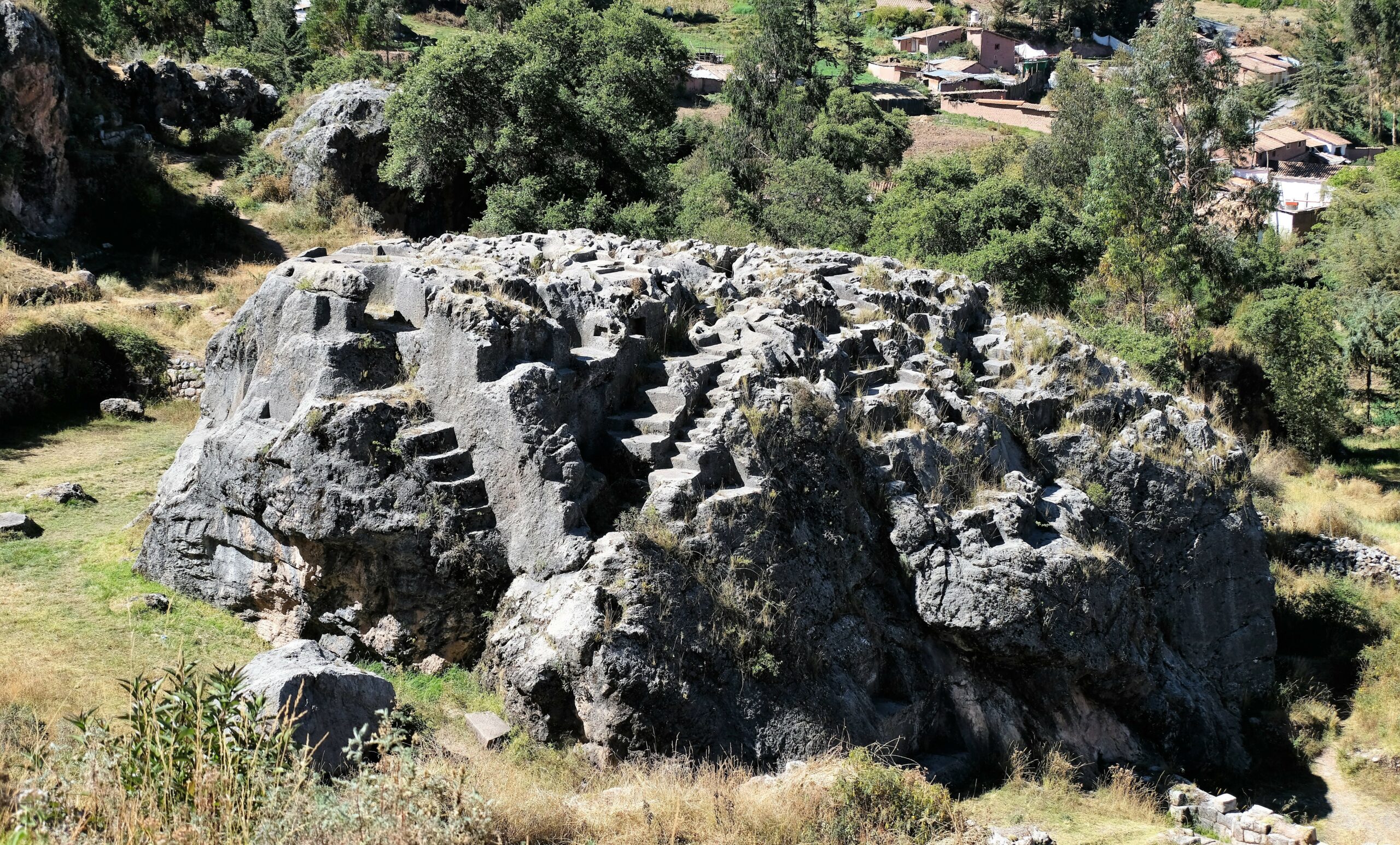
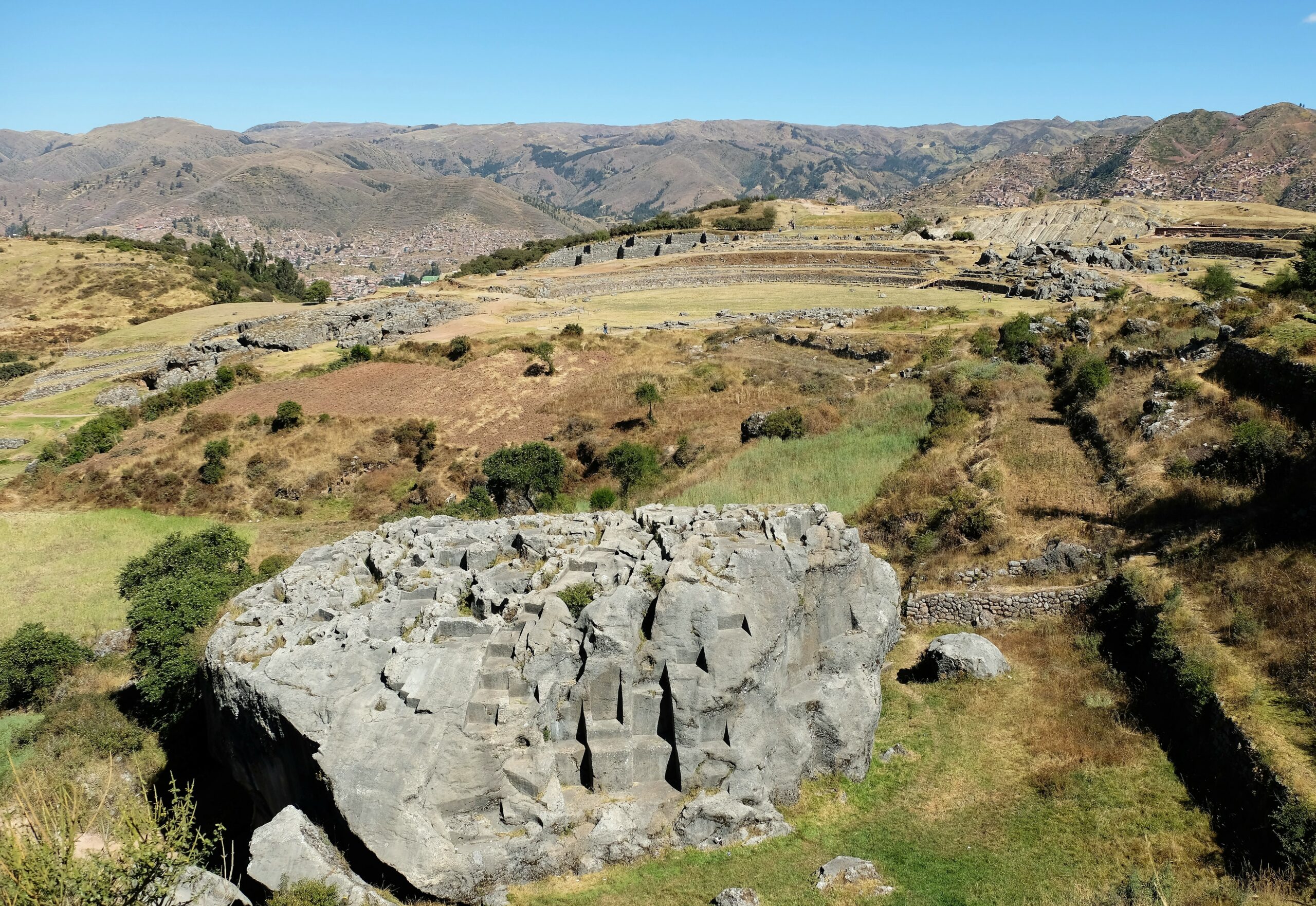
That’s it, my first real day in Cusco and I was left more than satisfied. I didn’t explore Cusco’s historical centre, Sacsayhuamán was enough for the day and I didn’t want to push myself. As for redoing my first day things will become clearer in my next post. I promise it will not take as long to get it written as this one took…reasons being…that’s a story for another time, maybe another year. As always I will post the blog post photos and additional photos on my Facebook page; give my three days after I’ve posted this and I’ll include all the photos on by Batnomad Facebook page.
